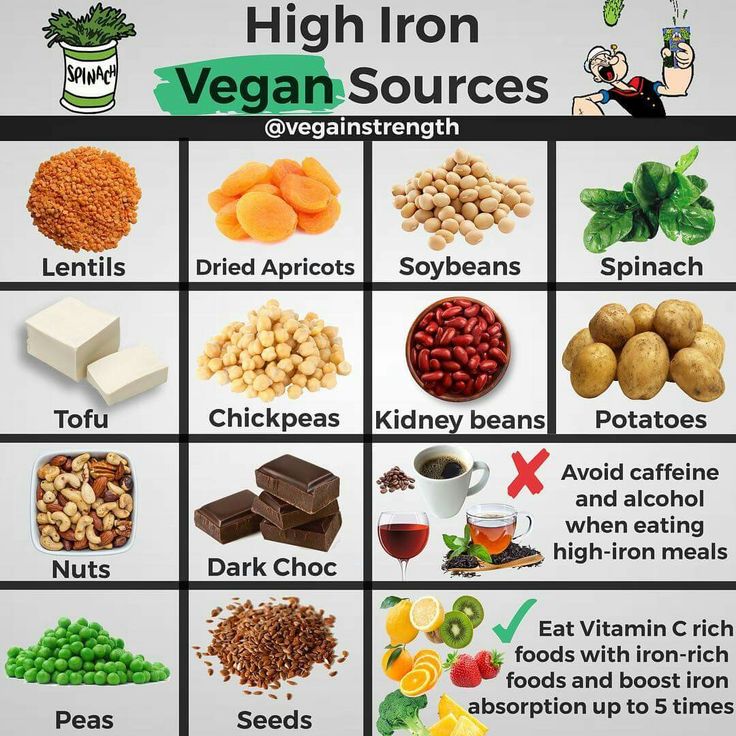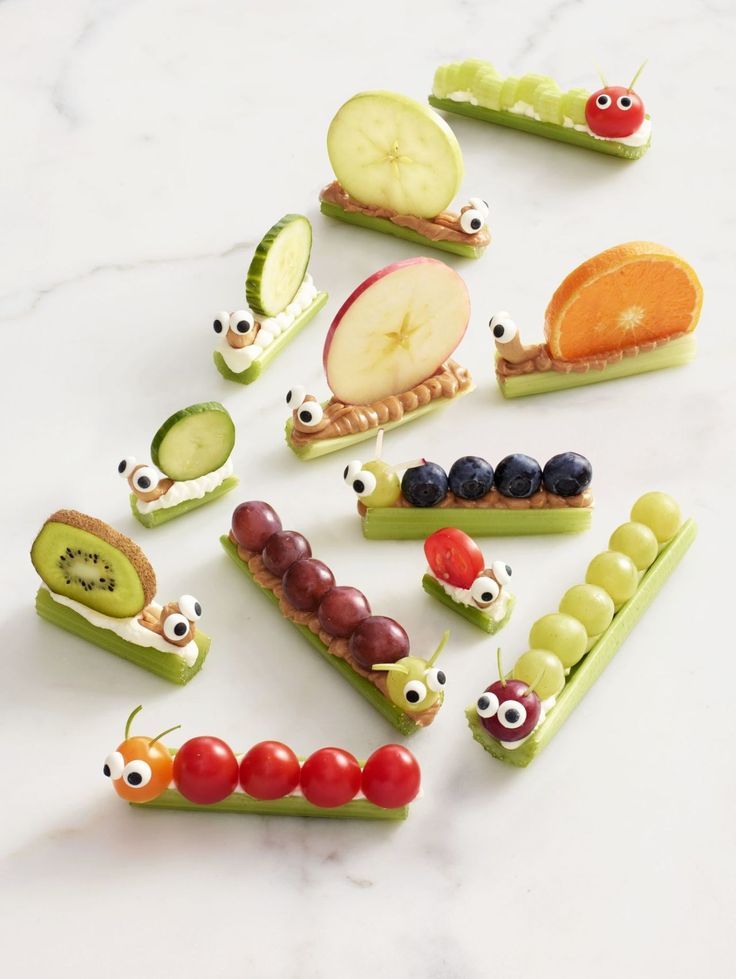Food for 6 months old baby in nigeria
20 NIGERIAN FOOD FOR BABIES 6 MONTH ON
Our list of 20 Nigerian food for babies from six months to eat
These are 20 Nigerian food for babies 6 months on.
The list is given with links to recipes in case one needs to learn how to cook these foods. They are good foods to introduce to a six-month-old. From six months, we are encouraged to start giving our babies solids even though I start earlier though.
Watch me prepare homemade baby food for my little one.
There are so many Nigerian foods for babies that can be fed 6-month-olds, loaded with nutrition. New parents sometimes think that processed canned foods are the best. yes, they are the best when you cannot find another alternative.
Here is a video of me making soya bean baby food at home. You can watch and use it if you like the recipe.
Also, learn how to make soya beans baby food from scratch with few ingredients.
If you have a kitchen, with pots and foodstuff, then there is no need for struggling with semi-solid canned foods. Canned baby foods have saved lives since and before we were born but they are not the best because to increase shelf life, sometimes preservatives are added, and to make them appealing to babies and parents or caregivers, artificial colors are also added most times.
I cannot sit here and condemn canned baby food. Nor judge you for feeding your six-month-old processed foods because they are not poison. They are food but not the best when compared with fresh foods. If you can, cook for your six-month-old or reduce the hotness.
PEPPER OR NO PEPPER IN BABY FOOD
Nigerians love spicy hot foods and these and that’s not bad but bad when you feed them to a six-month-old.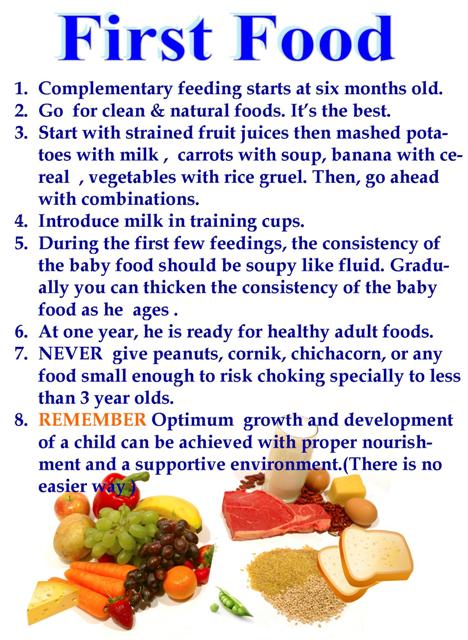
What I did when my kids got to that age was make my pepper sauce that’s already well cooked and store in the freezer. When cooking, the pepper container is brought out and kept to wait.
No pepper or very little is added during cooking. Once the food is almost ready, all ingredients have been added, we scoop out a small quantity into another cooking pot before adding more peppers to the general pot.
That way, the baby eats the same food everyone is eating without problems. It helps save money when at six months, babies are given solid foods served the whole family.
If you have more than one kid, you’d probably have observed that some children prefer cooked foods to the ones labeled baby food at stores. Some babies are just that way and there’s nothing anyone can do. MANY BABIES IN NIGERIA ENJOY HOMEMADE BABY FOOD
HOME COOKED MEALS?
We once had a neighbor who didn’t want her baby to eat local foods, wanted to try her best to make baby love foreign but for where.
can of pureed this and pureed that she bought remained opened and wasted while the little baby cried for local foods like yam, plantain, and even fufu swallows every time sweet baby sighted an adult eating.
This lovely privileged baby is ready to kick her can of food away and rush to the person eating ordinary low-cost Nigerian food.
At a point, mom got tired and gave up. Baby won as she starts getting the freedom to eat what other members of the family enjoy. There are babies who love these posh things kind of and can take feeders for up to three years if they are given.
There are also some like my boy who preferred cooked baby food to breast milk and weaned himself at nine months in preference for food served on the dining table. Moms like me would even love it when kids prefer breast milk and quick-mix foods because that saves time.
Cooking can be time-consuming sha but what can we do? Feed the little babies well and enjoy their happy company. At this age, the baby is still fed breast milk and cereals while being introduced to these solid foods.
SOLID NIGERIAN FOOD FOR BABIES IN NIGERIA
- Unripe banana ikokore wrapped with ugu leaves.
- Water Yam ikokore wrapped with green vegetables but not uziza.
- Boiled and mashed unripe plantain with stew.
- Mashed yam porridge>
- Irish potato porridge>
- Beans and sweet potato porridge.
- Boiled ripe plantain with beans.
- Boiled ripe plantain with stew.
- Bread and beverage. Dip tiny pieces of bread in a beverage (Nigerian tea) and feed the baby.
- Coconut milk moi moi.
- Semo with okra soup.
- Eba with ogbono soup.
- Wheat with vegetable ogbono soup is great for babies in Nigeria.
- Coconut rice cooked soft.
- Fried rice cooked soft or mashed after cooking.
- Jollof rice cooked soft with little or no pepper.
- Noodles for babies parboiled before cooking (Parboil and throw away the water before stir-frying with vegetables).
- Macaroni Jollof.

- Spaghetti Jollof.
Palm oil rice and beans one pot cooked soft.
HOW TO MAKE BABY FOOD WITH FAIRLY RIPE PLANTAIN
INGREDIENTS FOR BABY FOOD PLANTAIN:
- 2 fairly ripe plantains
- salt to taste
- Ground dried fish. You can debone your dried fish and grind yourself using the blender in your kitchen.
Water for blending and that is all.
The only items needed to make these baby food are A blender for the plantains, a non-stick pot, or a heavy-based cooking pot so that it doesn’t start to burn. A stirring spoon or spatula, Your gas cooker or stove, and some clean water
To MAKE BABY FOOD WITH PLANTAIN, Use fairly ripe plantain. You can use unripe plantain but they enjoy the fairly ripe ones more.
Please know that very ripe plantains are still ok but the fairly ripe ones taste better as they are not too sweet.
- First, wash and peel the plantains.
- Chop into tiny pieces and blend and pour into a clean bowl.

- Next, add a little oil and salt, stir very well.
- Add some ground dried catfish and mix. Check for salt and add a little if needed.
- Finally, wrap the blended fairly ripe plantain in broad leaves also known as moi moi leaves and steam. To steam this plantain meal for babies, you need to place some stones or gauze. You can place anything that prevents the blended plantain wraps from sitting directly on the water.
- Finally, place the pot on the stove, add some boiling water to the bottom of the pot and cover to cook. The water shouldn’t touch your plantain wraps.
Another method of making this baby food with plantains is to drop a little oil in the pot.
- Add the blended plantains, salt, and ground dried fish.
- Then stir continuously until it’s done.
- Blended fairly ripe plantain cooks really fast. You can break for a couple of seconds while stirring, and then resume and break again just like that until it quickly cooks.
 Wash your hands and feed the little ones.
Wash your hands and feed the little ones.
If you make this meal and your baby doesn’t ask for more, please tell us below. This baby food is loved by every Nigerian baby that has tried it. No parent has given any feedback that their baby did not enjoy this delicious plantain baby food.
Homemade baby food is the best for your baby if you have the time. Making baby food yourself, helps you experiment with variety, and come up with a list of the foods your child enjoys eating and the ones he doesn’t like.
When you create time for homemade baby food, it’s easier to identify what ingredient your child reacts to if he has any food allergies.
Because you are adding the baby food ingredients yourself, in the case that there is an allergy to food, you quickly start withdrawing some ingredients until you discover the ones to completely delete from the recipe and another important thing about homemade baby food is that you can come up with your own customized baby food exclusively for your little one due to what he loves to eat.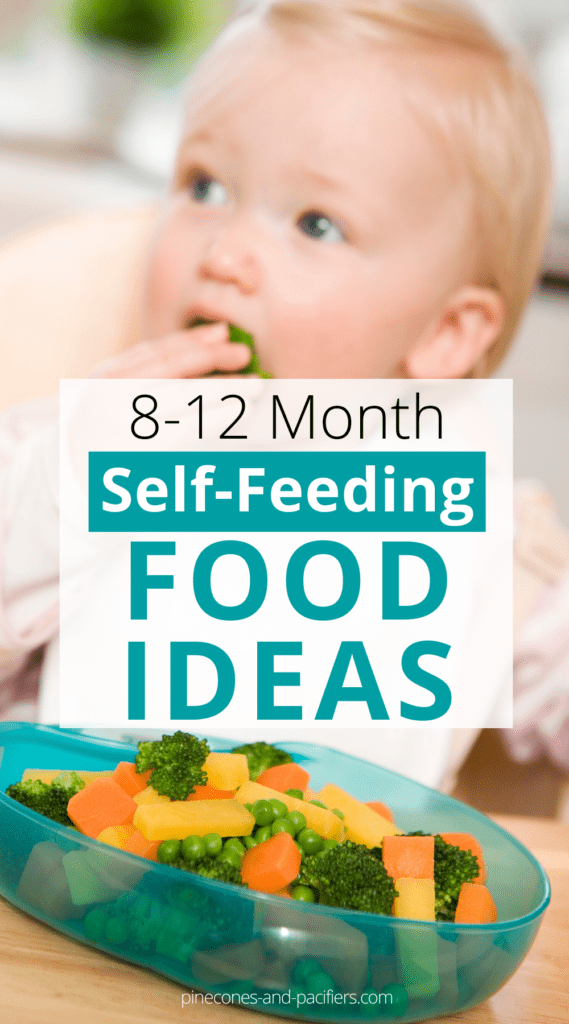
Every child is different. Making baby food for your child gives that cute baby the opportunity to enjoy special meals that other kids may not be privileged to eat.
CONCLUSION ON NIGERIAN FOOD FOR BABIES:
Our list of homemade Nigerian food for babies is very organic. The food is not processed, cooked without artificial colors. When we make baby food colorful, we blend sweet red bell peppers or use palm oil to create bright colours. We also add color with tomatoes. Not forgetting that these tomatoes, palm oil, or tatashey (sweet red bell peppers) don’t go well with all foods.
We add only to recipes that taste better with them. Homemade Nigerian baby food is the best for any baby. Organic foods are the best baby foods anywhere right now. If you cannot find the time to cook homemade baby food always, you can just include them whenever it’s ok but, make sure that from time to time, your baby is fed with homemade (home-cooked) baby food.
This 20 Nigerian food for babies from 6 months on is loaded with variety to take your baby for as long as you want.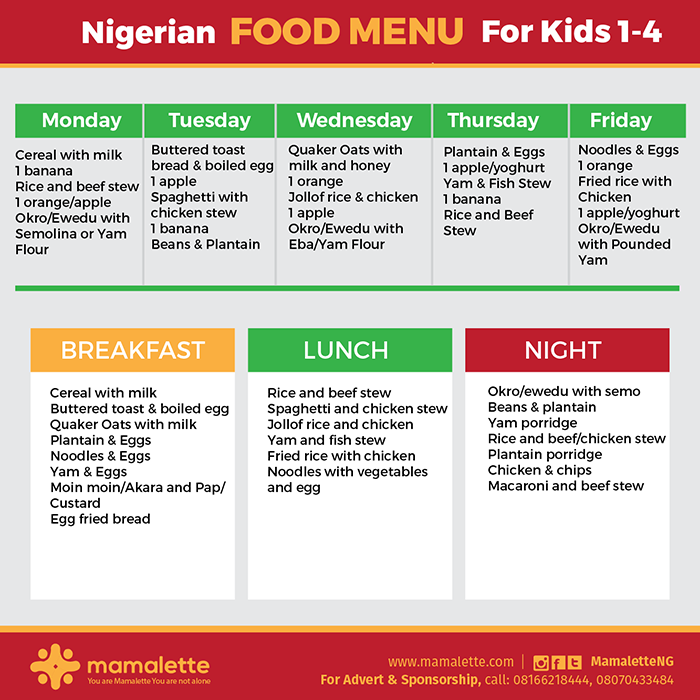
SEE ALSO: Naming ceremony outfits in Nigeria
Can you think of any other Nigerian foods good for six-month-olds? Please share by leaving a comment below. If you find this post useful, kindly share to enable more people to find it.
Try these recipes
- Foods to eat during pregnancy in Nigeria
- Can I add sugar to pap for my baby?
- Health benefits of moi moi and pap
YOU MIGHT LIKE THESE TOPICS
- How to properly boil ripe plantains
- Fairly ripe plantain and yam porridge
- Egg tomato stew with plantains
Nigerian food for 6 months old baby
Nigerian food for 6 months old baby…What can a 6 month old baby eat in Nigeria? Meal, diet and food timetable for babies and toddlers in Nigeria. Nigerian natural food for babies
The aim of this article is to amswer the following google searches:
👉Nigerian natural food for babies
👉Food time table for 7 months old baby
👉Nigerian food for 3 months old baby
👉Solid food for 6 month baby
👉Nigerian food for 4 months old baby
Many Nigerian mothers are usually confused about the the best Nigerian foods to give to their infant baby after 6 months of exclusive breastfeeding…. It is expected that mothers and caregivers to introduce solids and semisolid complementary foods while continuing breast milk to 6 months old babies after exclusive breastfeeding.
It is expected that mothers and caregivers to introduce solids and semisolid complementary foods while continuing breast milk to 6 months old babies after exclusive breastfeeding.
This becomes necessary because the breast milk, after 6 months is depleted and can no longer provide the baby with all essential nutrients, vitamins and all the 6 classes of foods like carbohydrates, calories, minerals, proteins, vitamins, fats and oils and water.
You can now see the need to introduce other types of food called complementary feeding to the infant baby. The aim is to make your baby grow well and not lack essential nutrients.
This article is the intellectual property of www.nimedhealth.com.ng
In Nigeria, the paediatrician commonest recommended foods for 6 and even 12 months baby are semisolid, solid foods and liquid foods. Parents are advised to start giving their babies what they the family normally eat at home like rice, beans, pap, custard, yoghurt, milk, vegetables, fruits and fruit juices, bread, biscuits and so on.
Nigerian food for 6 months old baby
Below are are list of Nigerian foods that should be given to a 6 months baby:
1. Pap/ogi/akamu
Whatever name you decide to call it, pap is the best, commonest, healthiest, cheapest and the most nutritious foods to give to a 6 months old Nigerian baby….The Pap or Akamu given to your 6 months old baby should be garnished or fortified with sugar, crayfish, and milk to make it more nutritious…. Parents are preferably told to add milk or ground crayfish or say milk to their babies’ pap to make it richer in nutrients. Garnished pap is so rich in calories, proteins, vitamin A and C, carbohydrates, minerals and even calcium…Dont forget calcium is important for the development of strong bones and teeth in children.
2. Custard.
Custard is a good alternative or substitute for pap in children… Custard powder is made up of a combination of milk, sugar, and egg yolk. Custard powder with milk or milo is a good source of nutrients to 6-12 months old Nigerian babies. Custard is fortified with vitamin A which is essential for good vision in babies.
Custard is fortified with vitamin A which is essential for good vision in babies.
3. Milk
When your baby reaches 6-12 months, you have the option to choose between offering fresh cow’s milk, or formula milk. Of course, breast milk is the best, but for parents who wish to offer other milk, you have these 2 options.
Cow’s milk is rich in protein and calcium, which is essential for the growth of bones and teeth. Moreover, at 12 months, your baby’s digestive system is now matured enough to break down the protein found in cow’s milk. Therefore it is a good option for your baby.
As for formula milk, it is fortified with vitamins and minerals, with all essential nutrients for your baby’s growth. Usually thought of as a marketing ploy by many, formula milk does have its use especially when it comes to picky eaters who are still not good at eating.
It is not really necessary to provide your child with formula milk if he is already taking in a well balanced diet. Cow’s milk is good enough for your growing baby. Only if he does not eat well, then formula milk could be an alternative.
Cow’s milk is good enough for your growing baby. Only if he does not eat well, then formula milk could be an alternative.
4. Swallows
A child between 6 -12 months can be given tiny morsels of swallow to eat…. Introduce the child to family meal. This is part of weaning a child from breast milk. A 6, 8 -12 months old baby in Nigeria can be given tiny morsels of eba, semovita, starch, amala, fufu, pounded yam, poundo yam, starch… etc. It is important for you to introduce solid food that 6 months old baby.
5. Fruits and Fruit Purees for Babies
Note that giving purees to your baby starts from 4 months and above because of their digestive organs while those on Exclusive breastfeeding is from 6months.
Please mother’s let’s be mindful of the combination, this babies have taste buds already thats y they will reject it. Mixing raw egg with any fruit is terrible combo, it’s not healthy for your baby.
Don’t fall for that deceit that children need sugar. Yes children need sugar but not graduated sugar, they need natural sugar, every body needs natural sugar. Sugar gotten frm food is good for babies, after using appropriate quatity of milk DON’T add anything until one year before you can add honey or date palm syrup …
Yes children need sugar but not graduated sugar, they need natural sugar, every body needs natural sugar. Sugar gotten frm food is good for babies, after using appropriate quatity of milk DON’T add anything until one year before you can add honey or date palm syrup …
Serious Note: DON’T keep any puree for later, it’s blend per feed
1. Apple and rice puree : boil your rice and apple together, you can also boil with green beans, blend together with milk.
2. Potatoes and carrot: Boil potatoes and carrot and blend with milk
3. Avocado pear and carrot: scoop out your pear in a blender, add milk and diced carrot and blend very well so the carrot can be smooth.
4. Semovita and apple or avocado pear or carrot: cook semo very light, cook any of the fruit you are using and blend together with milk.
5. Rice and carrot: cook rice,carrot and apple together and blend with milk.
6. Rice and potatoes: cook rice, potatoes and fresh fish and blend with the water you use in boiling fish. If you add enough fish, u may not need milk to be added.
If you add enough fish, u may not need milk to be added.
7. Potatoes and apple: boil potatoes and apple together and blend with milk.
8. Banana and rice: book your rice and put in the blender, add your banana and blend with milk, you can add boiled carrot or apple to it also.
9. Cabbage and rice: cook your rice and blend with cabbage, cucumber and milk
These and many more purees you can rock your baby with.
6. Indomie
Indomie is not a nutritious meal for babies or anyone but you can make it more nutritious and healthier if you cook it with eggs, crayfish, fish, snail, meat, chicken, turkey and what have you in meat proteins.
This article is the intellectual property of www.nimedhealth.com.ng
8. Meat
Meats should please be given to babies… Children not adults need more protein for their growth and development for more than adults…. Give you children enough beef, snails, goat meat, chicken, turkey, bush meat etc… They got a lot of protein and iron which is necessary for growth and red blood cells production.
9. Beans
Beans, which ever type, contains lots of nutrients especially carbohydrates and proteins necessary for a child’s nutritional needs…. Let your child eat plenty beans… You can even add vegetable like efo, ugu leaf etc. to the beans to make it richer.
10. Rice
Jollof rice, ofada rice, white rice and stew or fried rice can be given to babies between 6 -12onths and beyond. Rice is rich in calories which is essential for weight gain in babies.
11. Yam and unripe plantain
Let your 6 months old child nibble at cooked or roasted yam and cooked unripe plantain … You can add fried eggs.Yam porridge and plantain porridge is excellent for babies also.
12. Eggs
Give your child at least one cooked egg per week to eat. It is very nutritional and contains essential vitamins for healthy baby growth.
13. Juices
Nigerian based fruit juices like chivita, chi-exotic, bobo, Viju milk, 5 alive, happy hour are very good for babies around 6 months and beyond. Fruit juices are rich in vitamin C.
Fruit juices are rich in vitamin C.
14. Yogurt
Yoghurt like Hollandia, Greek yogurt, Habib yogurt, and other hygienic home made yoghurts are very good for babies above 6 months… Yogurt are probiotic which helps git health and prevents diarrhoea… Yogurt is also very rich in calcium, a mineral needed for the development of strong bones and teeth in kids.
15. Smoothies
Banana smoothies, tiger nuts, coconut, and dates smoothies is very good for growing children….These smoothies are very high in essential nutrients. You can also give zobo infant babies above 6 months.
This article on Nigerian food for 6 months old baby is the intellectual property of www.nimedhealth.com.ng
Diet for a child aged 4
Your baby is already 4 months old. He has noticeably grown up, become more active, is interested in objects that fall into his field of vision, carefully examines and reaches for them. The emotional reactions of the child have become much richer: he joyfully smiles at all the people whom he often sees more and more often, makes various sounds.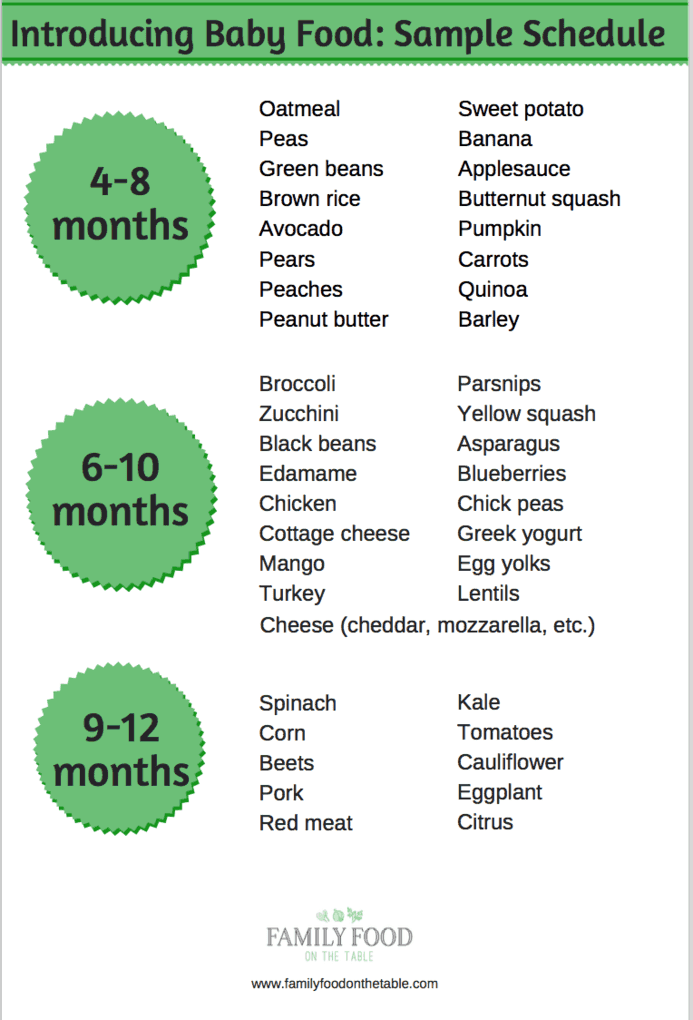
Are you still breastfeeding or have you switched to formula or formula feeding? The child is actively growing, and only with breast milk or infant formula, he can no longer always get all the necessary nutrients. And that means it's time to think about complementary foods. nine0003
Optimal time to start its introduction is between 4 and 6 months, regardless of whether the baby is receiving breast milk or formula. This is the time when children respond best to new foods. Up to 4 months, the child is not yet ready to perceive and digest any other food. And with the late introduction of complementary foods - after 6 months, children already have significant deficiencies of individual nutrients and, first of all, micronutrients (minerals, vitamins, long-chain polyunsaturated fatty acids, etc.). In addition, toddlers at this age often refuse new foods, they have delayed development of chewing skills for thick foods, and inadequate eating habits are formed. It is important to know that, no matter how strange it may seem at first glance, with a delayed appointment of complementary foods, allergic reactions more often occur on them. nine0003
nine0003
When is it advisable to introduce complementary foods as early as 4 months, and when can you wait until 5.5 or even 6 months? To resolve this issue, be sure to consult a pediatrician.
The optimal time to start introducing complementary foods to a healthy baby is between 5 and 5.5 months of age.
The World Health Organization recommends that breastfed babies should be introduced to complementary foods from 6 months of age. From the point of view of domestic pediatricians, which is based on the big
practical experience and scientific research, this is possible only in cases where the child was born at term, without malnutrition (because in these cases the mineral reserves are very small), he is healthy, grows and develops well. In addition, the mother should also be healthy, eat well and use either specialized enriched foods for pregnant and lactating women, or vitamin and mineral complexes in courses. Such restrictions are associated with the depletion of iron stores even in a completely healthy child by 5-5. 5 months of age and a significant increase in the risk of anemia in the absence of complementary foods rich or fortified with iron. There are other deficits as well. nine0003
5 months of age and a significant increase in the risk of anemia in the absence of complementary foods rich or fortified with iron. There are other deficits as well. nine0003
The first food product can be vegetable puree or porridge, it is better to give fruit puree to the baby later - after tasty sweet fruits, children usually eat vegetable puree and cereals worse, often refuse them altogether.
Where is the best place to start? In cases where the child has a tendency to constipation or he puts on weight too quickly, preference should be given to vegetables. With a high probability of developing anemia, unstable stools and small weight gains - from baby cereals enriched with micronutrients. And if you started introducing complementary foods with cereals, then the second product will be vegetables and vice versa. nine0003
If the first complementary foods are introduced at 6 months, it must be baby porridge enriched with iron and other minerals and vitamins, the intake of which with breast milk is no longer enough.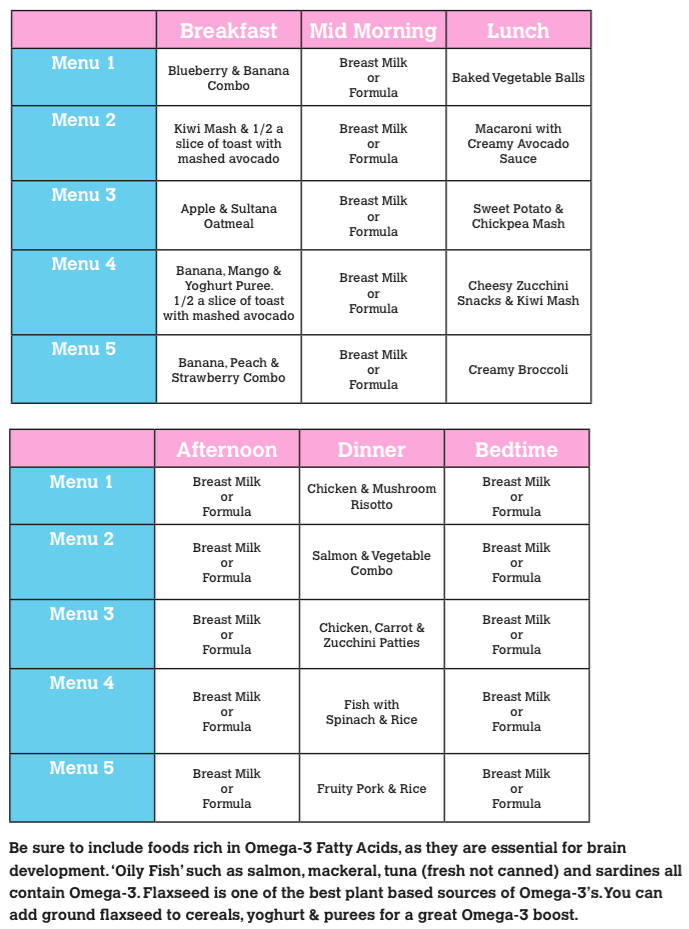
Another important complementary food product is mashed meat. It contains iron, which is easily absorbed. And adding meat to vegetables improves the absorption of iron from them. It is advisable to introduce meat puree to a child at the age of 6 months. Only the daily use of children's enriched porridge and meat puree can satisfy the needs of babies in iron, zinc and other micronutrients. nine0003
But it is better to introduce juices later, when the child already receives the main complementary foods - vegetables, cereals, meat and fruits. After all, complementary foods are needed so that the baby receives all the substances necessary for growth and development, and there are very few in their juices, including vitamins and minerals.
Juices should not be given between feedings, but after the child has eaten porridge or vegetables with meat puree, as well as for an afternoon snack. The habit of drinking juice between meals leads to frequent snacking in the future, a love of sweets is instilled, children have more tooth decay and an increased risk of obesity.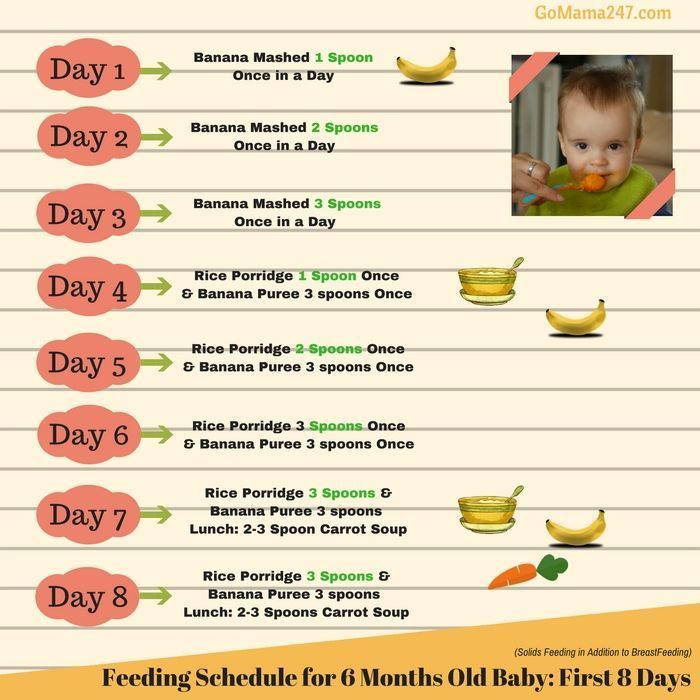 nine0003
nine0003
With the start of the introduction of complementary foods, the child is gradually transferred to the 5-time feeding regimen.
Complementary feeding rules:
- preference should be given to baby products of industrial production, they are made from environmentally friendly raw materials, have a guaranteed composition and degree of grinding
- Complementary foods should be offered to the baby by spoon at the start of feeding, before breastfeeding (formula feeding)
- the volume of the product increases gradually, starting with ½ - 1 spoon, and in 7 - 10 days we bring it to the age norm, subsequent products within the same group (cereals from other cereals or new vegetables) can be introduced faster, in 5 - 7 days
- start introduction with monocomponent products
- it is undesirable to give a new product in the afternoon, it is important to follow how the child reacts to it
- do not introduce new products in the event of acute illnesses, and before and immediately after prophylactic vaccination (should be abstained for several days)
When introducing a new type of complementary food, first try one product, gradually increasing its amount, and then gradually "dilute" this product with a new one. For example, vegetable complementary foods can be started with a teaspoon of zucchini puree. During the week, give the baby only this product, gradually increasing its volume. After a week, add a teaspoon of mashed broccoli or cauliflower to the zucchini puree and continue to increase the total volume every day. Vegetable puree from three types of vegetables will be optimal. The portion should correspond to the age norm. Over time, you can replace the introduced vegetables with others faster. nine0003
For example, vegetable complementary foods can be started with a teaspoon of zucchini puree. During the week, give the baby only this product, gradually increasing its volume. After a week, add a teaspoon of mashed broccoli or cauliflower to the zucchini puree and continue to increase the total volume every day. Vegetable puree from three types of vegetables will be optimal. The portion should correspond to the age norm. Over time, you can replace the introduced vegetables with others faster. nine0003
After the introduction of one vegetable (bringing its volume to the required amount), you can proceed to the intake of porridge, and diversify the vegetable diet later.
If the child did not like the dish, for example, broccoli, do not give up on your plan and continue to offer this vegetable in a small amount - 1-2 spoons daily, you can not even once, but 2-3 times before meals, and after 7 - 10, and sometimes 15 days, the baby will get used to the new taste. This diversifies the diet, will help to form the right taste habits in the baby.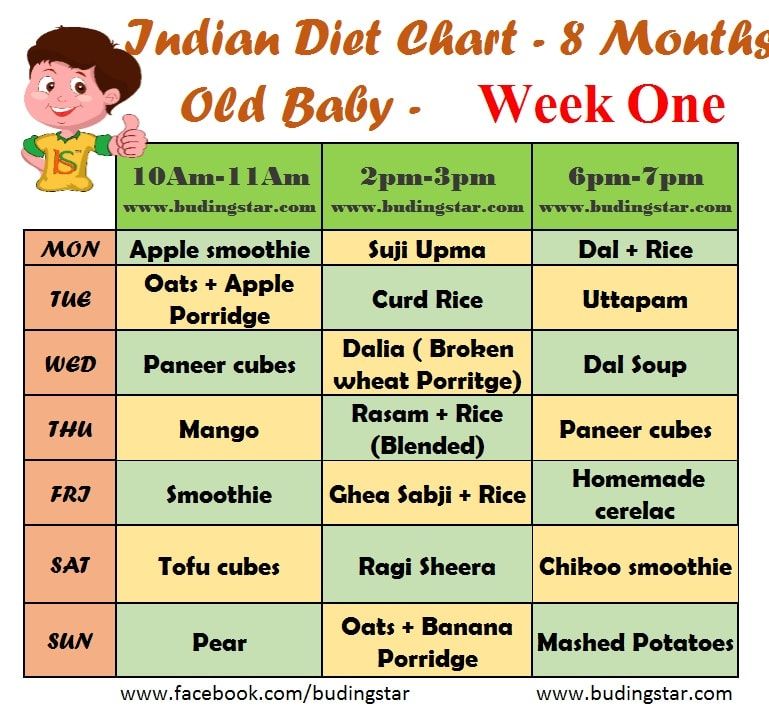 nine0003
nine0003
Spoon-feed with patience and care. Forced feeding is unacceptable!
In the diet of healthy children, porridge is usually introduced after vegetables (with the exception of healthy breastfed children, when complementary foods are introduced from 6 months). It is better to start with dairy-free gluten-free cereals - buckwheat, corn, rice. At the same time, it is important to use porridge for baby food of industrial production, which contains a complex of vitamins and minerals. In addition, it is already ready for use, you just need to dilute it with breast milk or the mixture that the baby receives. nine0003
Children suffering from food allergies are introduced complementary foods at 5-5.5 months. The rules for the introduction of products are the same as for healthy children, in all cases it is introduced slowly and begins with hypoallergenic products. Be sure to take into account individual tolerance. The difference is only in the correction of the diet, taking into account the identified allergens.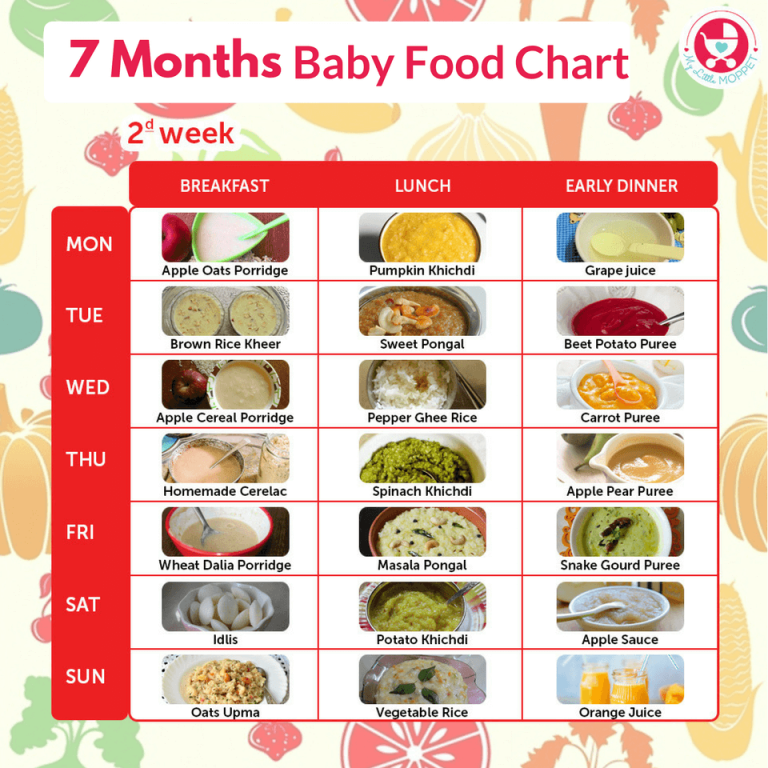 From meat products, preference should first be given to mashed turkey and rabbit.
From meat products, preference should first be given to mashed turkey and rabbit.
Diets for different age periods
explain how to make a diet, it is better on several examples that will help to navigate the menu for your child.
From 5 months, the volume of one feeding is on average 200 ml.
Option 1.
I feeding
6 hours
Breast milk or VHI*
200 ml
II feeding
10 hours
Dairy-free porridge**
Supplementation with breast milk or VHI*
150 g
50 ml
III feeding
14 hours
Vegetable puree
Meat puree Vegetable oil
Supplemental breast milk or VHI*
150 g
5 - 30 g
1 tsp
30 ml
IV feeding
18 hours
Fruit puree
Breast milk or VHI*
60 g
140 ml
V feeding
22 hours
Breast milk or VHI*
200 ml
* - Children's dairy mixture (VHI)
** - diluted with breast milk or VHI
Option 2.
9000 9000 9000 9000 9000 9000 9000 9000 9000 9000 9000 9000 9000 9000 9000 9000 9000 9000 9000 9000 9000 9000 9000 9000 9000 9000
baby 6 months, if complementary foods were introduced from 4 - 5 months:
| I feeding | Breast milk or VHI* | 200 ml |
| II feeding | Dairy-free porridge** | 150 g |
| III feeding | Vegetable puree | 150 g |
| IV feeding | Fruit puree | nine0086 40 g 140 ml |
| V feeding | Breast milk or VHI* | 200 ml |
* - Children's dairy mixture
** - diluted with breast milk or DMS
Option 3.
An approximate daily diet for a baby at 6.5 months on breastfeeding, if complementary foods began to be administered from 6 months:
| I feeding | Breast milk | |
| II feeding | Dairy-free porridge** | 100 g |
| III feeding | Vegetable puree | 100 g |
| IV feeding | Breast milk |
|
| V feeding | Breast milk |
|
** - diluted with breast milk
Up to 7 months, increase the volume of porridge and vegetable puree to 150 g and introduce fruit puree. nine0003
diet for a 6-month-old baby with breast and artificial feeding, sample menu for a week in the table, diet for a day
Published: 02/10/2021
Reading time: 4 min.
Number of reads: 195200
Author of the article: Ponomareva Yulia Vladimirovna
Pediatrician, candidate of medical sciences, allergist-immunologist
Changes in a child in the first year of life are very rapid, and each month is not like another. The 6-month milestone is very important, it is largely evaluative and transitional. By this age, most babies have doubled their birth weight, are about 15 cm tall, and some babies have already erupted their teeth. The age of 6 months is also transitional in terms of nutrition. Breast milk or an adapted formula is still the basis of the diet, but with the beginning of the second half of life, all children, without exception, should begin to receive complementary foods. Despite the general graph of growth and weight gain and indicators of psychomotor development, the status and diet of children at 6 months can be very different. nine0003
nine0003
Content: Hide
- The first feeding of 6 months
- The start of feeding at 4-5 months
- The second half of the life
- for a week for a child at 6 months
The first feeding of 6 months
If the baby is healthy and breastfed, and his mother eats a full and varied diet, exclusive breastfeeding is possible until this age. Cereal complementary foods in this case are preferable to start. This is due to the high energy and nutritional value of cereals, the ability to significantly enrich the baby's diet with a delayed start of the introduction of complementary foods. nine0003
However, the rate of expansion of the child's diet in this situation will be accelerated. Before the 8th month of life, it is necessary to introduce all basic food groups into the baby’s menu, since in the second half of the year the need for additional intake of nutrients and micronutrients is very high. Another reason explaining the importance of the rapid introduction of complementary foods is the formation of immunity of the immune cells of the intestine to ordinary food. If a child is introduced to these foods at the age of 4-8 months, the risk of developing food allergies has been proven to be reduced. nine0003
If a child is introduced to these foods at the age of 4-8 months, the risk of developing food allergies has been proven to be reduced. nine0003
Complementary feeding starts at 4-5 months
In modern life, the nutrition of a nursing mother, unfortunately, is not always complete. Therefore, for most breastfed babies, complementary foods already need to be introduced from 5 months in order to prevent deficient conditions.
If a child is bottle-fed, then by the 4th month of life, the baby will not have enough adapted formula alone, and in this group of children, the timing of the introduction of complementary foods usually shifts a month earlier than in breast-fed babies. Accordingly, by 6 months, children will have vegetable puree and gluten-free porridge (buckwheat, corn and rice) in their diet. In the first half of life, monocomponent meals are used (that is, from one type of grain and vegetables), prepared on the basis of water, breast milk or an adapted mixture. nine0003
Fruit puree and juice can be another possible complementary food for children under 6 months of age without allergy symptoms. In a child with a risk of developing or manifesting allergies, the timing of the introduction of fruit complementary foods is shifted to the 8th month.
In a child with a risk of developing or manifesting allergies, the timing of the introduction of fruit complementary foods is shifted to the 8th month.
Second six months of life
Children over 6 months of age can supplement their diet with cereals containing gluten. First of all, these are oatmeal and wheat porridge, and then multi-cereal dishes with the addition of other cereals (millet, barley, rye). If the child does not have any manifestations of allergies, milk porridge can be included in the menu at this age. Bebi Premium industrial baby food products include specially prepared milk that is safe to use in healthy babies in the first year of life. nine0003
From the age of 6 months, the baby's diet is expanded with such important products as meat and cottage cheese. These products are a source of high-quality protein, fats, and are also rich in minerals such as iron, calcium, and phosphorus. Pediatricians and nutritionists recommend introducing meat and cottage cheese as part of combined dishes based on a fruit and vegetable and / or grain component in a ratio of 1 (cottage cheese / meat): 4–5 (fruits / vegetables / cereals).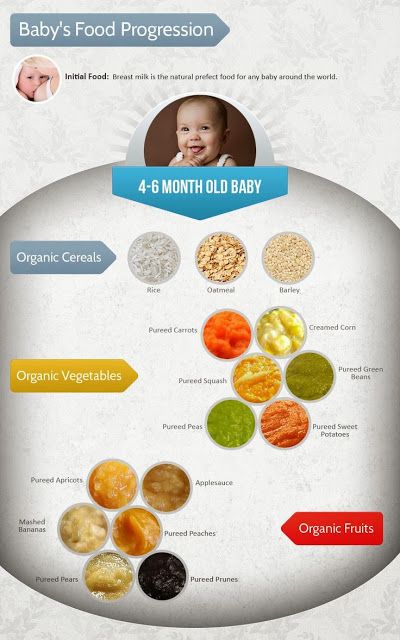
To enrich the diet with polyunsaturated fatty acids in the second half of the year, the menu includes vegetable oil in the amount of 3–5 grams per day, which can be added to the complementary food dish. The volume of each feeding is approximately 150-170 ml, and the child can already stand up to 3.5 hours between meals. nine0003
In the table below, we offer a menu of 6 months for a week for a child who started receiving complementary foods at the age of 4-5 months, and by the time the second half of life begins, dairy-free gluten-free cereals, vegetable and fruit purees have already been introduced into his diet.
1st day
| Meeting | menu | ml/g | |
| Breast milk/mixture | 150 | 50 | |
| Lunch (12.30) | vegetable soup with beef, olive oil | 100/30/3 | compot from drocked | 60/40 |
| Breastmilk/formula | 0520 | ||
Lunch (12. | |||


